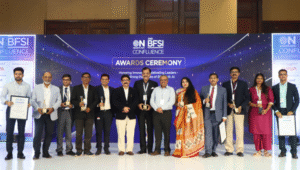Strengthening MSME Lending: The Need for Real-Time Data Integration

In recent years, the small and medium enterprises (SMEs) sector has emerged as a cornerstone of the Indian economy, contributing significantly to GDP and employment. However, to unlock its full potential, there is an urgent need for policy reform that addresses a key bottleneck faced by both MSMEs and the banks that lend to them. This critical reform is integrating real-time data systems between banks and their clients.
Policy Development for Real-Time Information
The government must develop a policy requiring banks to obtain real-time information from the businesses they lend. The starting point for this information should be a system that integrates the entire operation of these businesses. This system provides end-to-end digitisation and manages every aspect of operations. By ensuring that relevant data from the system can flow seamlessly to banks, this policy would ensure that banks have a comprehensive view of how the loan money is utilised. Real-time data would provide banks with continuous insights into financial health and operational activities, allowing for quicker recognition of weakness and risk management.
In the past, banks could not process the vast amount of real-time data from businesses due to manual oversight. The advancement of AI has solved this gap. AI can now continuously monitor data, quickly identify patterns, and flag anomalies or deviations in real time. This automation ensures that potential issues are promptly detected and escalated to the right individuals for immediate action.
Reducing Risk and Encouraging Growth
One key advantage of real-time information is its ability to quickly differentiate between financially sound businesses and those at risk. Currently, banks often struggle to make this distinction, leading them to adopt a one-size-fits-all approach that includes high collateral demands and increased interest rates for all businesses. When the banks are unable to see the true financials, they solve it by spreading the risk across the board by raising the cost of the capital and collateral, which forms barriers to entry and growth, defeating the intent of having more MSMEs grow and/or more entrepreneurs coming and creating more MSMEs.
Implementing a proactive system that gives banks visibility reduces their risks and thus allows them to decrease spreads and minimise collateral. This would enable both well-managed existing businesses and new ventures to access the capital they need to grow. By lowering these barriers, we can encourage the emergence of new businesses and support the expansion of existing ones, fostering a more dynamic and competitive economy.
Conclusion
Integrating real-time data systems between banks and MSMEs is not just a policy necessity but a strategic imperative for India’s economic future. By enabling banks to access continuous and accurate insights into the financial health of MSMEs, this approach can revolutionise the lending landscape. It would allow banks to manage risks more effectively, offer fairer loan terms, and support the growth of deserving enterprises. As MSMEs flourish with easier access to affordable credit, the broader economy stands to benefit from increased job creation, enhanced competitiveness, and sustained economic growth. The time is ripe for a concerted push towards this transformative change, ensuring that the MSME sector, the backbone of the Indian economy, can reach its full potential.
Author: Viren Choudary, Founder & CEO of Readywire
Disclaimer: The views expressed in this article are solely those of the author and do not necessarily reflect the opinions or policies of ObserveNow Media. The author is solely responsible for ensuring the accuracy, completeness, and validity of the information presented, encouraging readers to independently verify and seek professional advice if needed.
















